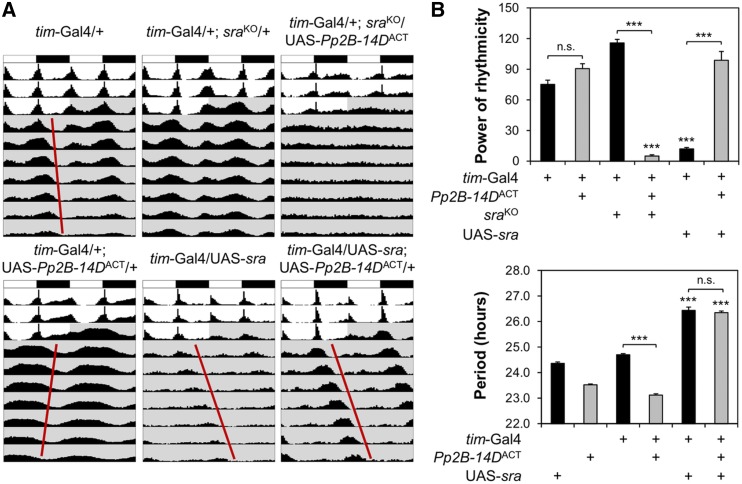Figure 6.
sra genetically suppresses Pp2B-14DACT to sustain circadian locomotor rhythms. (A) Averaged actograms of transgenic flies overexpressing the constitutively active Pp2B-14DACT in wild-type, sraKO heterozygous, or sra-overexpressing background were double-plotted (n = 29–136). (B) Rhythmicity in free-running locomotor behaviors (top) and circadian periods in rhythmic flies (bottom) were analyzed similarly as in Figure 1. Data represent average ± SEM (n = 29–136). Two-way ANOVA detected significant interaction of Pp2B-14DACT with sraKO [F (1, 344) = 185.3, P < 0.0001 for power of rhythmicity] and sra overexpression [F (1, 297) = 36.24, P < 0.0001 for power of rhythmicity; F (1, 249) = 38.52, P < 0.0001 for circadian periods], validating the genetic interaction between sra and Pp2B-14DACT on free-running locomotor behaviors in DD. *** P < 0.001 vs. the same combination of tim-Gal4 or Pp2B-14DACT transgene in wild-type, sra background as determined by Tukey’s post hoc test. CT, circadian time; DD, constant dark; n.s., not significant UAS: upstream activating sequence.

